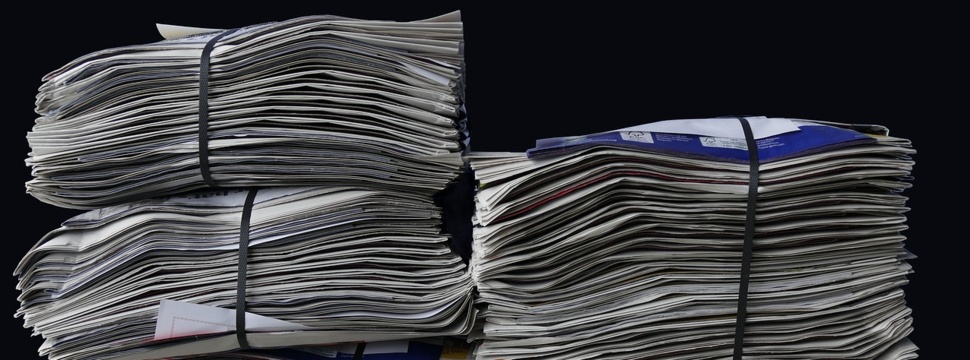Interview with Manfred Schacht, head of purchasing and production in the Heise Group
News News blog
Manfred Schacht is responsible for purchasing and production in the Heise Group, the parent company of Birkner Publishing Company, and is therefore in constant contact with printers. He is therefore also a competent contact on topics concerning paper production, the current paper shortage and the future of print products.

BIRKNER: Mr Schacht, how much paper does the Heise Group use per year?
Manfred Schacht: The annual paper consumption of the Heise Group amounts to approximately 7,500 tonnes.
BIRKNER: What do you say to those who claim that print is dead?
Manfred Schacht: This statement is too sweeping for me and does not correspond to our experience. It is true that in recent years there has been a reduction of print products in competition with digital media, a new balance is settling in, so to speak. It is still impossible to imagine the field of advertising without print because communication goals are fulfilled here that cannot be achieved with digital advertising alone. In this context, eBooks should also be mentioned, which, contrary to predictions, have by no means replaced the printed book.
BIRKNER: What do you place particular emphasis on when choosing your paper suppliers?
Manfred Schacht: I expect our suppliers to deliver good quality, to be reliable and to offer value for money.
BIRKNER: Do you know a joke that has paper in it?
Manfred Schacht: What did I do when a cop pulled me and said "papers"? I said "scissors" and drove away.
BIRKNER: Paper as a raw material was in short supply in 2021. How did this play out at the Heise Group?
Manfred Schacht: In 2021, the paper shortage led to a tripling of the effort for paper procurement. It was and still is necessary to compensate for sudden supply shortfalls due to a lack of raw materials - wood, pulp, recovered paper, etc. - in the paper industry. Price increases of up to 100 % were the result. However, in 2021 we mainly had annual contracts with fixed conditions, which the suppliers largely adhered to.
BIRKNER: What is good paper for you?
Manfred Schacht: There are various factors to consider here, also depending on what exactly the paper is used for. In general, however, it can be said that the degree of whiteness, surface smoothness and good, trouble-free printability are the most important criteria when assessing paper quality.
BIRKNER: How is the industry dealing with the fact that paper prices are skyrocketing so exorbitantly at the moment?
Manfred Schacht: All publishers have started to reduce the amount of paper they use, for example by reducing the content, the number of pages or the formats.
BIRKNER: What concrete changes do you notice in the Heise Group in this context?
Manfred Schacht: We were among the first publishers to create concepts with the measures described above.
BIRKNER: Have the circulation figures for the telephone directories, the local telephone directories and the Yellow Pages already been adjusted downwards because of the increased paper prices?
Manfred Schacht: Only in parts, as we have already adjusted editions to actual needs in previous years for cost reasons. We have therefore concentrated on deleting added-value content in order to reduce the page count.
BIRKNER: Are the increased paper prices also having an impact on printers' delivery schedules because paper stocks in warehouses are running low?
Manfred Schacht: The causes for delivery problems here are not so much the increased paper prices, but rather machine shutdowns and the shortage of raw materials.
BIRKNER: Can you tell our readers an insider tip on how to get high-quality paper in times of paper shortage?
Manfred Schacht: Currently, only good, long-standing business relationships with several broad-based paper suppliers are helping. New customers are hardly accepted or supplied by the paper suppliers at present.
BIRKNER: In times of ‘Fridas for Future’ and scarcity of resources, is paper or are paper products still a contemporary medium at all?
Manfred Schacht: Here I plead for a more differentiated view. Every current medium has its raison d'être depending on its intended use, and this applies to both digital and analogue media. The times of great paper waste are over anyway; the demand for paper in Europe alone has more than halved in the last 10 years. The wood used to produce virgin fibre papers is a renewable raw material with net growth in Europe. Digital communication is replacing paper in many cases. This has many process advantages and makes sense from an innovative point of view.
However, the question arises here whether the many huge data centres are really more environmentally friendly than paper, especially when one considers the enormous energy requirements they create. In this context, one must also bear in mind that many environmentally harmful products, such as plastics, are used in the production of IT technology, which must also be disposed of at some point.










